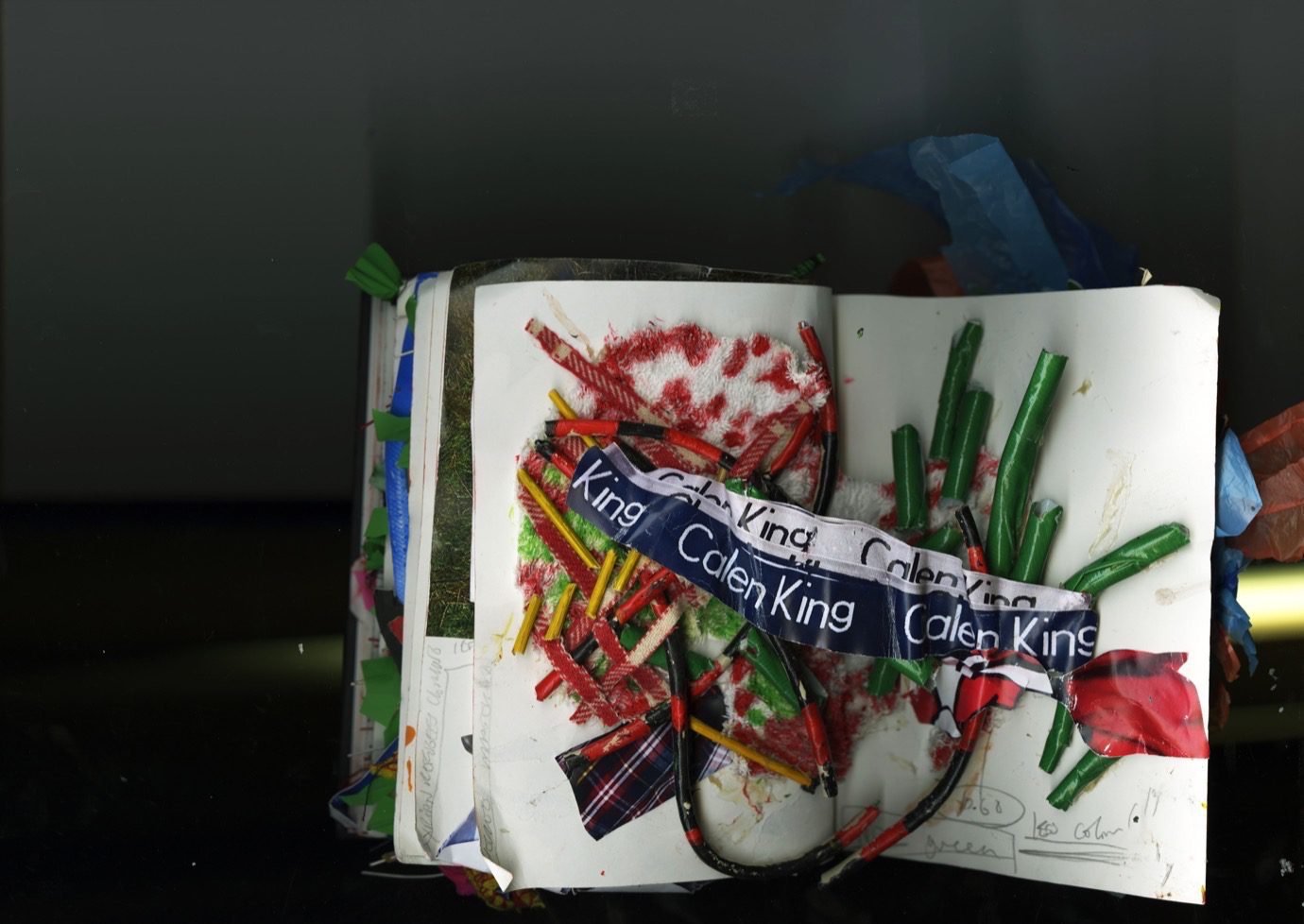For Nico Verhaegen, a Belgian designer and MA graduate of the Royal Academy of Fine Arts in Antwerp, the decision to enter the fashion education pathway was a spontaneous move. After previously graduating from a graphic design degree at LUCA School of Arts in Genk (a university known for counting Raf Simons as one of its alumni) and working for a few years in the field, Verhaegen applied on a whim after getting fired from his job. “ I didn’t know at all how to sew and didn’t own a sewing machine at the time,” he says, “when I got in, my ex’s grandma gave me hers!”
Nico Verhaegen designs an ode to nomadic existence
An unusual parallel is drawn between shamans and bike messengers in Verhaegen’s recent graduate collection.
Verhaegen says that his interest in fashion came from the industry’s strong ties with the world of graphic design. “At LUCA, my teachers told me that my style of work looked like Peter de Potter’s graphic design at Raf Simons. And I was a fan of Peter de Potter, but I had no clue who Raf was!” Another big stimulus for starting to consider fashion was discovering Simons’ designs that referenced the punk aesthetic. “That made me realise that fashion can be about more than just clothes.”
The concept for Verhaegen’s graduate collection, Styx, came through an exploration of similarities between shamanism and bike messengers. “I thought that what connects them the most is their nomadic attitude, the mentality of always being on the road and travelling.” Another analogy between the two came from the significance of objects. In his research process, Verhaegen saw visual overlaps in shamanic ritual accessories, such as ropes and talismans, and emblems of biker’s gear: a thick chain worn across the body, roll-up backpacks, or light reflectors. The designer was also drawn to the singular way in which messengers tend to look: “I think their style is very unique because they don’t need to pretend to be anything else – it’s a very honest way of dressing.”
“I see so much potential in ‘trash’ and I try to elevate it into a new form of luxury, where the luxury is time that goes into patchworking all these elements together and developing clothes. The materials might have only cost me 10 euros, but the time I spent on making the garments gives it value.”
Verhaegen wanted the collection to look like it was “made on the road” and put a lot of emphasis on working in a sustainable way. This approach came through in his choice of materials: the clothes are predominantly created out of leather scraps, deadstock fabrics from various factories in Belgium, CO2 neutral linens, and even repurposed broken-up reflectors. With his designs, he wants to redefine what it means for clothes to be considered as ‘luxurious’. “I see so much potential in ‘trash’ and I try to elevate it into a new form of luxury, where the luxury is time that goes into patchworking all these elements together and developing clothes. The materials might have only cost me 10 euros, but the time I spent on making the garments gives it value,” explains Verhaegen.
Nico Verhaegen, Development
“I think working digitally gives you so much more freedom and is a great way to create surroundings and context for a collection,”
The designer says that his self-proclaimed ‘hoarding tendencies’ allowed him to work on his collection at a regular speed during the pandemic: “I didn’t have to sacrifice a thing, with maybe just a small issue of having enough space for cutting out the patterns. I’m not the type of person that only buys something with a garment in mind. I have loads of materials around and I just buy what I like – it will find its way into my collection at some point.”
He’s also excited about showcasing his designs in the digital sphere, in place of a traditional fashion show. “Coming from a graphic design background, I’ve always been very pro-digital. With this collection, I 3D scanned all of my pieces, put them on my friends that I have scanned for previous projects, and created a surreal movie out of it. I think working digitally gives you so much more freedom and is a great way to create surroundings and context for a collection,” says Verhaegen.
“Design what you don’t see in the industry and design in a way that you think the industry needs to become.”
While looking back at his time on the course, Verhaegen says that his advice for any future students at the Academy is to stay true to their identity, no matter what. “Be yourself, and if you’re not sure who you are yet, try to figure that out. You have a lot of freedom there – but don’t try to please anyone! In my entrance exam, I was talking with the professors about Black Metal and I still got in. Design what you don’t see in the industry and design in a way that you think the industry needs to become.”
In his view, the biggest issue with fashion is the absence of humanity within the industry, with endless hours, and lack of respect and fair pay for the work. Before starting his own brand, Verhaegen’s goal is to work in a studio that takes these values seriously, similarly to what his experience as an intern at Ann Demeulemeester during university was like: “People that work there are kind, no one gets screamed at and there’s no pretentious ego bullshit hierarchy that you see in the bigger companies. And I would love to see that approach of treating people like people becoming a part of the industry at large.”








































